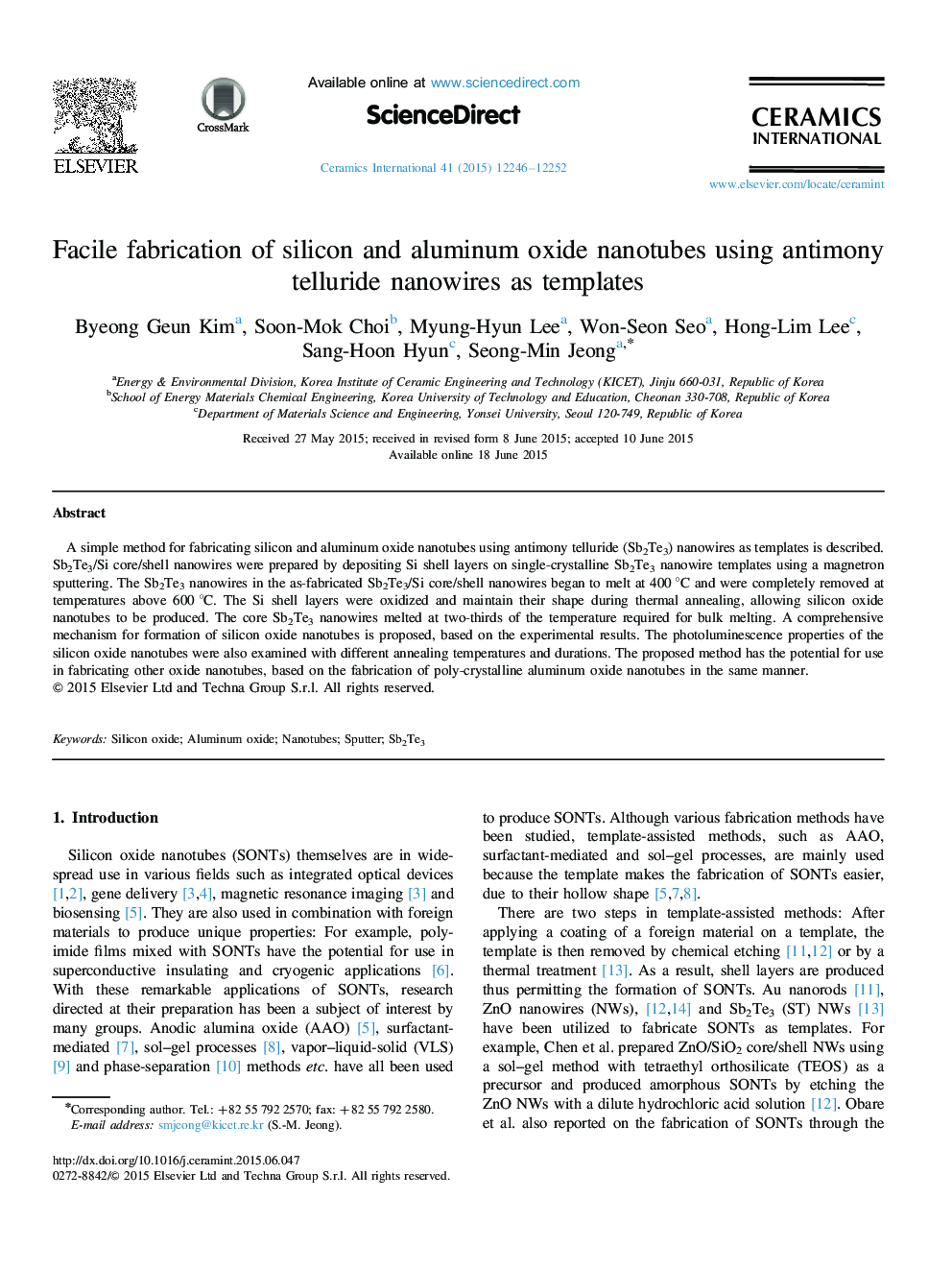| Article ID | Journal | Published Year | Pages | File Type |
|---|---|---|---|---|
| 1459968 | Ceramics International | 2015 | 7 Pages |
A simple method for fabricating silicon and aluminum oxide nanotubes using antimony telluride (Sb2Te3) nanowires as templates is described. Sb2Te3/Si core/shell nanowires were prepared by depositing Si shell layers on single-crystalline Sb2Te3 nanowire templates using a magnetron sputtering. The Sb2Te3 nanowires in the as-fabricated Sb2Te3/Si core/shell nanowires began to melt at 400 °C and were completely removed at temperatures above 600 °C. The Si shell layers were oxidized and maintain their shape during thermal annealing, allowing silicon oxide nanotubes to be produced. The core Sb2Te3 nanowires melted at two-thirds of the temperature required for bulk melting. A comprehensive mechanism for formation of silicon oxide nanotubes is proposed, based on the experimental results. The photoluminescence properties of the silicon oxide nanotubes were also examined with different annealing temperatures and durations. The proposed method has the potential for use in fabricating other oxide nanotubes, based on the fabrication of poly-crystalline aluminum oxide nanotubes in the same manner.
